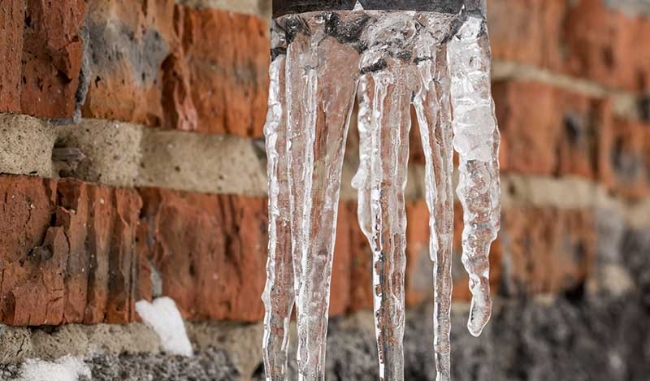Key Methods for Preventing Frozen Plumbing in Winter
Key Methods for Preventing Frozen Plumbing in Winter
Blog Article
Just how do you feel when it comes to Helpful Tips to Prevent Frozen Pipes this Winter?

Cold weather can wreak havoc on your pipes, especially by freezing pipelines. Here's exactly how to avoid it from occurring and what to do if it does.
Introduction
As temperatures drop, the risk of icy pipes increases, potentially bring about costly repair services and water damage. Recognizing how to stop icy pipes is essential for house owners in cool environments.
Understanding Icy Pipelines
What triggers pipes to ice up?
Pipes ice up when exposed to temperatures below 32 ° F (0 ° C) for prolonged periods. As water inside the pipelines freezes, it broadens, taxing the pipeline wall surfaces and possibly creating them to break.
Dangers and problems
Icy pipelines can lead to water disturbances, residential property damages, and expensive fixings. Burst pipes can flood homes and create considerable structural damages.
Indications of Frozen Water Lines
Identifying frozen pipes early can prevent them from breaking.
Just how to determine icy pipelines
Try to find decreased water circulation from faucets, unusual odors or sounds from pipelines, and noticeable frost on revealed pipes.
Avoidance Tips
Shielding vulnerable pipelines
Wrap pipelines in insulation sleeves or use warmth tape to secure them from freezing temperatures. Concentrate on pipes in unheated or outside locations of the home.
Home heating strategies
Maintain indoor spaces appropriately warmed, especially areas with pipes. Open up closet doors to permit cozy air to distribute around pipelines under sinks.
Securing Outside Plumbing
Garden tubes and outdoor taps
Detach and drain pipes yard pipes before winter. Set up frost-proof spigots or cover exterior faucets with protected caps.
What to Do If Your Pipes Freeze
Immediate activities to take
If you presume icy pipelines, keep faucets open to relieve pressure as the ice thaws. Use a hairdryer or towels soaked in warm water to thaw pipes gradually.
Long-Term Solutions
Structural modifications
Think about rerouting pipelines away from exterior wall surfaces or unheated areas. Include additional insulation to attic rooms, cellars, and crawl spaces.
Upgrading insulation
Invest in high-quality insulation for pipelines, attics, and walls. Appropriate insulation aids preserve constant temperature levels and decreases the danger of icy pipes.
Conclusion
Protecting against frozen pipes requires aggressive measures and quick responses. By comprehending the causes, indicators, and preventive measures, house owners can secure their plumbing throughout winter.
5 Ways to Prevent Frozen Pipes
Drain Outdoor Faucets and Disconnect Hoses
First, close the shut-off valve that controls the flow of water in the pipe to your outdoor faucet. Then, head outside to disconnect and drain your hose and open the outdoor faucet to allow the water to completely drain out of the line. Turn off the faucet when done. Finally, head back to the shut-off valve and drain the remaining water inside the pipe into a bucket or container. Additionally, if you have a home irrigation system, you should consider hiring an expert to clear the system of water each year.
Insulate Pipes
One of the best and most cost-effective methods for preventing frozen water pipes is to wrap your pipes with insulation. This is especially important for areas in your home that aren’t exposed to heat, such as an attic. We suggest using foam sleeves, which can typically be found at your local hardware store.
Keep Heat Running at 65
Your pipes are located inside your walls, and the temperature there is much colder than the rest of the house. To prevent your pipes from freezing, The Insurance Information Institute suggests that you keep your home heated to at least 65 degrees, even when traveling. You may want to invest in smart devices that can keep an eye on the temperature in your home while you’re away.
Leave Water Dripping
Moving water — even a small trickle — can prevent ice from forming inside your pipes. When freezing temps are imminent, start a drip of water from all faucets that serve exposed pipes. Leaving a few faucets running will also help relieve pressure inside the pipes and help prevent a rupture if the water inside freezes.
Open Cupboard Doors
Warm your kitchen and bathroom pipes by opening cupboards and vanities. You should also leave your interior doors ajar to help warm air circulate evenly throughout your home.

As a passionate person who reads about Preventing and dealing with frozen pipes, I was thinking sharing that piece of writing was a good idea. In case you enjoyed reading our blog posting kindly be sure to pass it around. Thanks a lot for going through it.
Book Instantly Report this page